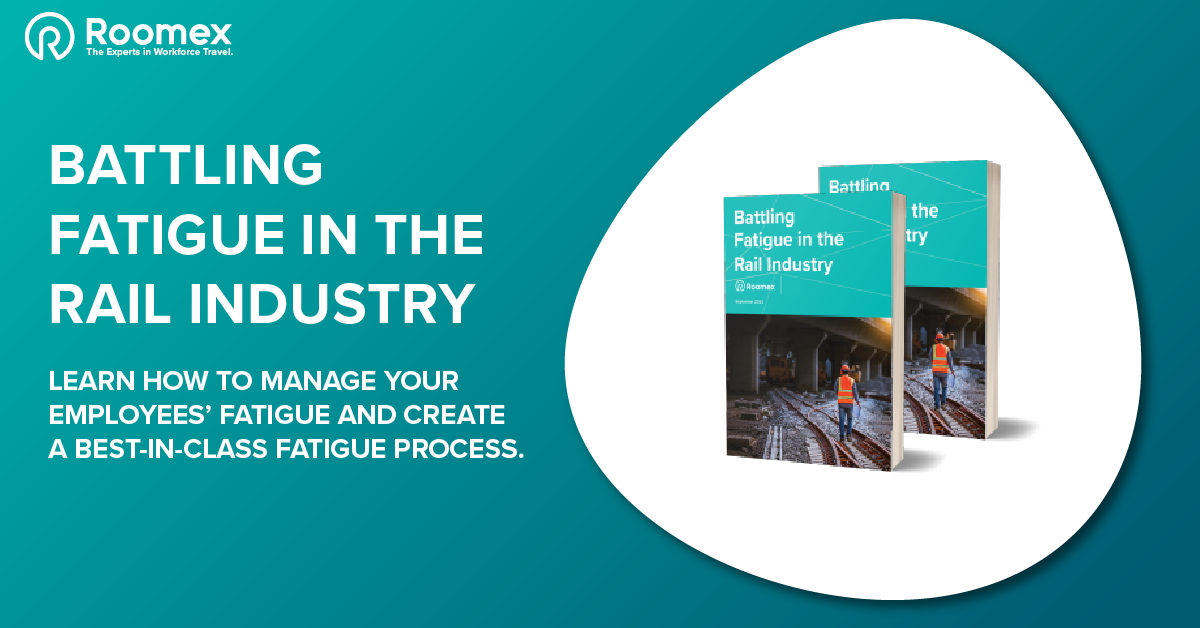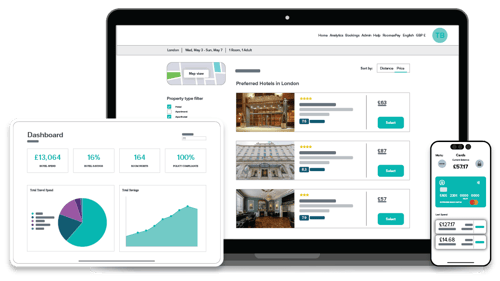This is a summary of our eBook - 'Battling Fatigue in the Rail Industry'. To read this eBook in it's entirety click here.
Fatigue poses a significant safety risk within the rail industry, with consequences ranging from accidents to injuries and errors. This critical issue has resulted in an annual average of 36 worker fatalities and a staggering cost of £240 million to the industry since 2017. In addition to this, a shocking 54% of rail staff admit feeling overburdened, with 37% working over 50 hours per week. Alarmingly, 73% consider fatigue as a hazard that goes unnoticed. These statistics underscore the pressing need for both employers and employees in the rail sector to address this concern. This eBook provides insights into fatigue, its causes, consequences, and strategies for prevention, as well as an overview of updated UK fatigue legislation and a case study demonstrating what successful rail fatigue management looks like. It aims to equip workers with a better understanding of rail fatigue, aiding employers and employees in creating a safer and fatigue-free workplace.
Key Takeaways
- Fatigue involves reduced alertness and decreased task performance.
- Various factors contribute to fatigue, such as physical exertion, sleep deprivation, and irregular shift work.
- Fatigue can have a profound impact on rail workers' safety, productivity, and well-being.
- Strategies for fatigue prevention include adequate rest, proper nutrition, and smart shift scheduling.
- Third-party tools like Roomex and Weston Analytics' Fatigue360 provide rail fatigue software which can simplify fatigue management for employers.
Causes of Fatigue in Rail Workers
Rail fatigue doesn't result solely from long hours and sleep deprivation. Several underlying factors can trigger this condition, making it imperative to recognise and comprehend these factors for everyone in the workplace. Common causes of fatigue in rail workers include:
- Physical Exertion: The physically demanding tasks such as lifting heavy objects, climbing, and confined space work can lead to fatigue over time.
- Sleep Deprivation: Prolonged working hours often lead to sleep deprivation, hindering alertness and decision-making abilities.
- Shift Work: Irregular shifts disrupt sleep patterns and lifestyle, impacting physical and mental well-being.
- Psychological Factors: Stress, anxiety, and depression can contribute to fatigue by impeding relaxation and sleep.
- Medical Conditions: Conditions like sleep apnea and chronic fatigue syndrome can also cause fatigue and require medical intervention.
It's essential to recognise that fatigue is cumulative. The more fatigued an individual is, the more susceptible they become to further fatigue. Understanding these factors empowers rail workers to better manage fatigue.
Consequences of Fatigue in Rail Workers
Rail fatigue carries severe repercussions for workers, including:
- Increased Accident Risk: Fatigue impairs cognitive functions, increasing the likelihood of accidents and injuries.
- Reduced Productivity: Difficulty in concentrating and focusing leads to decreased productivity.
- Increased Errors: Fatigue raises the likelihood of mistakes, which is critical in safety-sensitive rail work.
- Increased Absenteeism: Fatigue makes it challenging for employees to attend work regularly.
- Decreased Well-being: Fatigue contributes to physical and mental issues like headaches, irritability, and depression.
- Increased Costs: Reduced productivity, accidents, errors, and absenteeism result in higher project costs.
Employer Responsibilities
Employers have an essential role in rail fatigue management within their workforce. They should:
- Educate employees about fatigue risks and prevention through training.
- Establish rail fatigue management policies addressing issues like shift scheduling and rest breaks.
- Monitor employee fatigue levels regularly through self-assessment or supervisor observation.
- Take prompt action to address employee rail fatigue, such as providing extra rest breaks or modifying shift schedules.
Preventing Fatigue in Rail Workers
Preventing fatigue is paramount in the rail industry to ensure the safety of workers, passengers, and the public. Strategies for preventing rail fatigue include:
- Prioritising adequate sleep, aiming for 7-8 hours per night.
- Maintaining a consistent sleep schedule, even on weekends.
- Creating a calming bedtime routine while avoiding electronic devices before sleep.
- Refraining from caffeine and alcohol before bedtime.
- Ensuring regular meals and snacks for stable blood sugar levels.
- Incorporating regular exercise into daily routines.
- Effectively managing stress through healthy coping mechanisms.
If employees experience fatigue regularly, they should consult their manager and consider seeking medical advice for underlying causes.
New UK Legislation and a Successful Implementation
Network Rail's updated Fatigue Risk Management Standard (NR/L2/OHS/003), introduced in October 2022, underscores the significance of fatigue management in the rail industry. Employers must proactively monitor rail fatigue levels and implement a compliant rail fatigue management plan. The plan should be straightforward, incorporating recommended guidelines while allowing flexibility for company-specific needs, such as commute time.
A UK-based rail construction company successfully adapted to the updated Network Rail fatigue standard with the help of Roomex and Weston Analytics. They needed a solution that streamlined fatigue management and accommodation booking. The partnership enabled Roomex, with over 100,000 workforce-ready properties, and Fatigue360, to facilitate a compliant rail fatigue management plan with access to the widest workforce-ready accommodation network available.
Before adopting these tools, this UK-based rail construction company struggled with manual processes involving roster creation and accommodation booking. This resulted in duplicated data and unnecessary time consumption. Roomex and Fatigue360 streamlined these operations, significantly reducing time spent on the process. The integration of these tools simplified data management and empowered employees to allocate more time to critical tasks.
Conclusion
Fatigue is a critical safety concern in the rail industry, but it doesn't have to be a daunting challenge. Understanding the key factors contributing to rail fatigue and the strategies for its prevention is crucial for rail workers, employers, and the entire industry. With updated UK legislation, employers must adopt best-in-class rail fatigue management plans, and various tools are available to make the process more manageable. By following these insights, rail organisations can enhance safety, increase efficiency, and save both time and money while addressing the pressing issue of fatigue in the industry.
This is a summary of our eBook - 'Battling Fatigue in the Rail Industry'. To read this eBook in it's entirety click here.

October 27, 2023

